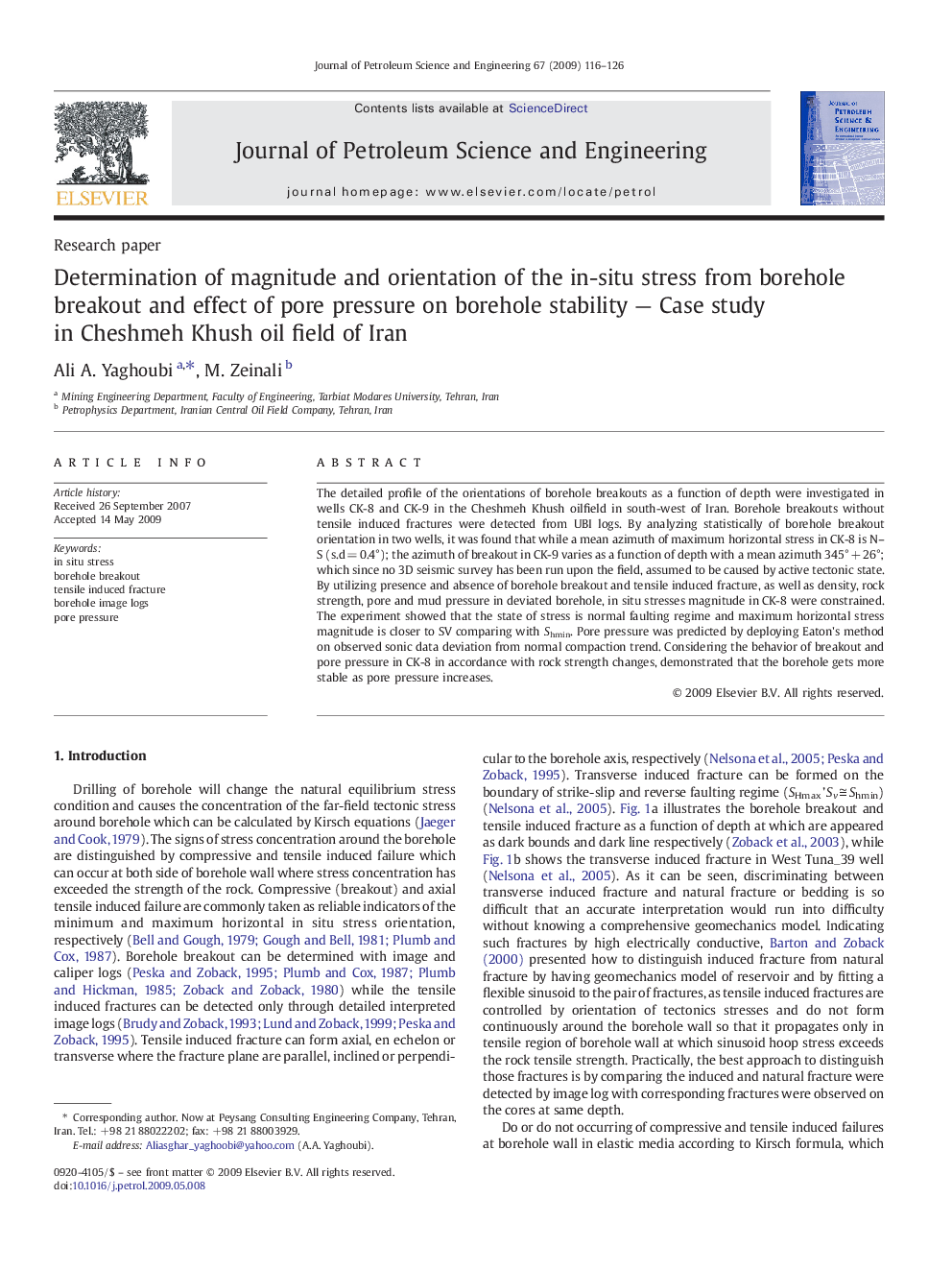| Article ID | Journal | Published Year | Pages | File Type |
|---|---|---|---|---|
| 1756109 | Journal of Petroleum Science and Engineering | 2009 | 11 Pages |
Abstract
The detailed profile of the orientations of borehole breakouts as a function of depth were investigated in wells CK-8 and CK-9 in the Cheshmeh Khush oilfield in south-west of Iran. Borehole breakouts without tensile induced fractures were detected from UBI logs. By analyzing statistically of borehole breakout orientation in two wells, it was found that while a mean azimuth of maximum horizontal stress in CK-8 is N-S (s.d = 0.4°); the azimuth of breakout in CK-9 varies as a function of depth with a mean azimuth 345° + 26°; which since no 3D seismic survey has been run upon the field, assumed to be caused by active tectonic state. By utilizing presence and absence of borehole breakout and tensile induced fracture, as well as density, rock strength, pore and mud pressure in deviated borehole, in situ stresses magnitude in CK-8 were constrained. The experiment showed that the state of stress is normal faulting regime and maximum horizontal stress magnitude is closer to SV comparing with Shmin. Pore pressure was predicted by deploying Eaton's method on observed sonic data deviation from normal compaction trend. Considering the behavior of breakout and pore pressure in CK-8 in accordance with rock strength changes, demonstrated that the borehole gets more stable as pore pressure increases.
Related Topics
Physical Sciences and Engineering
Earth and Planetary Sciences
Economic Geology
Authors
Ali A. Yaghoubi, M. Zeinali,
